Yates Account
Join now
Create a Yates account today!
Sign up to join the Yates Garden Club for monthly e-mails packed with seasonal inspiration, tips for success & exclusive promotions.
Plus if you’re a Garden Club member you can take part in the Yates Growing Community - a blog to share successes, get advice & win prizes in fun challenges along the way!

Forgot password
Enter the email address associated with your account, and we'll email you a new password.

Spring’s the time for planting warmth-loving vegetables, especially all your favourites that have Central American or South American origins. These include beans, pumpkins, sweetcorn and the various members of the Solanaceae family.
The extended Solanaceae family includes potatoes, tomatoes, capsicums and chillies. In this article, we'll shine the spotlight on these last two, as they have very similar preferences in the garden.

Capsicums and chillies were distributed all over the world after the Spanish conquest of South and Central America. Black pepper was already popular in Europe as a spice, so the mouth-tingling new introductions were also given the name 'peppers', despite being completely unrelated. This is why chillies and capsicums are still collectively described as 'peppers'.
Chillies
Chillies, in particular, became an integral part of the diet in places like the Indian subcontinent and much of Asia, the Mediterranean and Eastern Europe. Did you know that paprika, the hero ingredient in Hungarian goulash, is made from hot chillies?
Chillies owe their spicy kick to an oily substance called capsaicin, which is mostly contained in the white pith around the seeds. Capsaicin has a fascinating effect on our bodies when we eat it - as soon as it touches the mucous membrane in our mouths, it triggers nerve sensors to send a false alarm to our brains, that we experience as a burning sensation. When you sweat or have a runny nose after eating hot chilli, that's your body responding to the false alarm by trying to cool you down!
Some chillies are so spicy they can be dangerous, and must be handled with care. In fact, spicy capsaicin is the key active ingredient in Police pepper spray! It’s especially important to wash your hands well after handling chillies - make certain chilli juice never gets near your eyes or sensitive skin, or there will be tears!

'Jalapeño' chillies
There is actually a measurement system for the spiciness of chillies, called the Scoville Scale. It's measured in Scoville Heat Units (SHU). The higher the SHU rating, the fiercer the chilli is!
For lovers of mild or moderately hot chillies:
- Yates Small Gardens Chilli 'Jalapeño' are easy to grow and packed with flavour. Jalapeños are mildly spiced, at a very approachable 4,000 to 8,500 SHU. Perfect to add some extra sparkle to dishes, and they're delicious pickled.
- Heirloom Yates Chilli 'Long Red Cayenne' is the traditional ingredient in ground cayenne pepper. A great everyday chilli to add a spicy zest to meals, it's rated at a medium-hot 30,000 to 50,000 SHU.
- Flavoursome Yates Chilli 'Jwala' is a popular all-rounder for Indian cooking. Generally used green, 'Jwala' has a distinctive fruity, apple-like flavour, and is rated at a medium-spicy 30,000-50,000 SHU. Jwala means "flame" in Hindi; a cheerful hint about the character of this chilli!
For those brave souls who like it apocalyptically hot:
- Pungent flavoured Yates Chilli 'Birds Eye' is a traditional favourite for South-East Asian cuisines. Fiercely hot, it's around 50,000–100,000 SHU on the Scoville scale. Ideal for use fresh, dried, ground, or for chilli paste.
- Our hottest chilli is the Yates Chilli 'Habanero', which produces small, bell-shaped fruit, that turn scarlet red at maturity - rated at 100,000–350,000 SHU. The Habanero's extreme heat and floral aroma is a favourite in spicy Tex-Mex or Caribbean foods.
Chillies mature into relatively small plants, so they're ideal for pots, in a sunny spot. Chillies aren't very cold-tolerant; they really don’t like frost. In favourable conditions, chillies can survive for a year or more.

'Birdseye' chillies
Capsicums
What we know as capsicums are called ‘bell peppers’ in North America. They're a mild-tasting fruit, that becomes sweeter as it ripens. Capsicums need full sun, rich, well-drained soil and regular fertilising. They can be grown in good-sized pots, but it’s probably easier to grow them in the ground.
Our Yates seed range includes three very popular capsicum varieties:
- The classic Yates Capsicum 'Giant Bell' produces large, sweet, glossy fruit that can be used green and crisp, or allowed to mature to a rich, mellow red.
- Yates Capsicum 'Colour Salad Selection' produces a lucky dip of bright red, yellow or orange fruit, in different shapes and sizes. It’s always fun to grow them, to see what you end up with!
- Yates Capsicum 'Corno di Toro' is a sweet-tasting heirloom bulls-horn variety, producing long, curved fruit (up to 25cm) which eventually mature to bright red.
These are all classed as ‘sweet peppers’ because they don’t have any of the fierce heat of chillies.
Pro Tip: Capsicums can be harvested when they're green, but wait until they've reached full size (the fruit walls will thicken and they'll have a better flavour). Or, you can leave them to gradually develop their mature colour and full sweetness.

A selection of colourful capsicums bring party-time to your plate.
Germination Tips
An early start is valuable, to give chillies or capsicums lots of time to ripen at the end of the season. Early sowings should be kept indoors or in a warm, sheltered spot until the weather warms.
Chillies and capsicums need constant soil temperatures of at least 23°C to germinate. As a rule of thumb, the hotter the chilli, the higher the temperature needed to germinate them. You’ll definitely need to find a warm spot for your seedlings to germinate! The kitchen windowsill above the sink is good if it's warm enough, as it’s easy to keep an eye on your pots or trays. This reduces the chance of them drying out and they can be rotated regularly to receive even amounts of light. Be prepared to move seedlings away from the window overnight, as glass can radiate cold on frosty nights.
To get started early in the season, we recommend a heat pad (available from garden retailers – they're quite durable and should last for years). Using an artificial heat source can make a dramatic improvement in your germination rate for heat-loving seeds.

Capsicum 'Corno di Toro'...it's quite a sweetie
Growing Tips
Prepare garden soil for chillies and capsicums by digging in compost or aged manure. Add some organic-based fertiliser like Yates Dynamic Lifter Organic Plant Food. Check drainage – if the soil is heavy, it’s better to build a raised bed or plant into mounds of soil, to ensure the water drains easily.
When the soil warms up, seeds can be sown straight into the soil, but most growers prefer to start them off inside as mentioned above, in pots of Yates Black Magic Seed Raising Mix before transplanting into the garden.
Feed with Yates Thrive Tomato Granular Plant Food as the plants grow, and make sure they're well watered. A layer of organic mulch, like bark chips or pea straw will help hold moisture in the soil.
Capsicum plants can support themselves, but heavy crops of fruit increase the risk of the stem snapping - bitterly disappointing just before harvest! It's best to stake capsicum plants early, so you won't need to shove a stake through the delicate root system when the plants are mature.
Watch out for sap-sucking pests and caterpillars and control them with Yates Nature's Way Organic Citrus, Vegie & Ornamental Spray when you spot them.

'Habanero' chillies...handle with care!
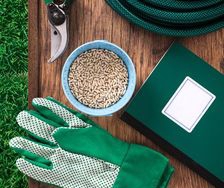

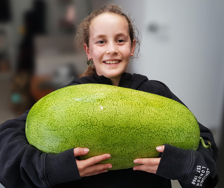
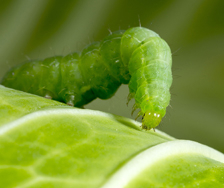
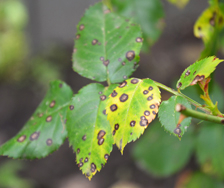
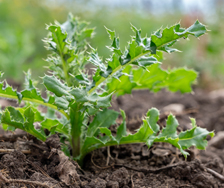
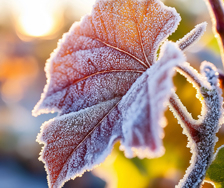










Share
Share this article on social media